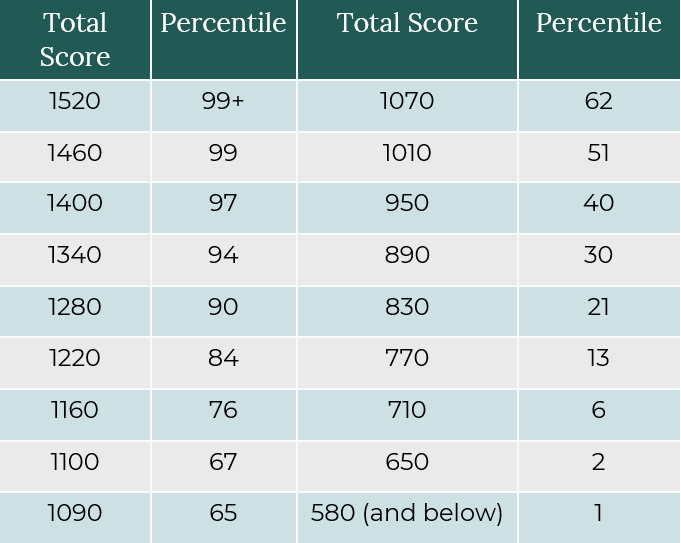As high school students prepare for their college journey, one important milestone is the Preliminary SAT (PSAT) exam. The PSAT is a standardized test administered by the College Board and serves as a precursor to the Scholastic Aptitude Test (SAT), which is a widely used test for college admissions in the United States. Scoring well on the PSAT can have several benefits, including eligibility for scholarships, recognition from the National Merit Scholarship Program, and preparation for the SAT. In this blog, we will explore the significance of a good PSAT score, what constitutes a good PSAT score, and how to interpret PSAT scores.
Why is a Good PSAT Score Important?
The PSAT is an essential test for high school students as it offers several advantages:
- Scholarship Opportunities: A good PSAT score can open doors to various scholarship opportunities. High-scoring students may qualify for the National Merit Scholarship Program, which awards scholarships to top-performing students based on their PSAT scores. Additionally, some colleges and universities offer scholarships to students who achieve exceptional PSAT scores, which can help offset the cost of tuition and make higher education more affordable.
- College Admission Preparation: The PSAT is similar in format and content to the SAT, which is a crucial test for college admissions. Scoring well on the PSAT can help students gain familiarity with the test format, question types, and time management strategies, providing them with valuable experience for the SAT. It also allows students to identify their strengths and weaknesses, enabling them to focus on areas that need improvement before taking the SAT.
- National Merit Scholarship Recognition: High-scoring students on the PSAT may receive recognition from the National Merit Scholarship Program, a prestigious academic competition that awards scholarships to students who demonstrate exceptional academic ability. This recognition can enhance a student's college applications and may also provide additional opportunities for internships, research, and networking.
- Benchmark for Academic Progress: The PSAT can serve as a benchmark for students to assess their academic progress. It provides valuable feedback on their strengths and weaknesses in different subject areas, which can help students and their educators identify areas that may need additional attention. This feedback can guide students in developing effective study strategies and improving their performance in subsequent exams.
What Constitutes a Good PSAT Score?
The PSAT is scored on a scale of 320 to 1520, with two main sections: Evidence-Based Reading and Writing (EBRW) and Math. Each section is scored from 160 to 760. The scores for these two sections are then added together to get the total score, which ranges from 320 to 1520. In addition to the total score, students also receive subscores for Reading, Writing, Language, and Math, as well as a score for the PSAT Selection Index, which is used for National Merit Scholarship eligibility.
A good PSAT score can be subjective, as it depends on the individual's goals and aspirations. However, a general guideline for a good PSAT score is one that is above the national average. According to the College Board, the average PSAT score for 11th graders in 2020 was around 1040, with a score of 520 in each section. Therefore, a score above 1040 can be considered a good PSAT score, indicating that a student is performing better than the national average.
It's important to note that the PSAT is typically taken by students in their junior year of high school, but some students may choose to take it in their sophomore year as well. Taking the PSAT early can provide students with an opportunity to gain experience with the test format and content, which can help them perform better when they take it again in their junior year, which is the year that is considered for National Merit Scholarship eligibility.
In addition to the national average, students should also consider the average scores of students admitted to the colleges or universities they are interested in. Many colleges and universities publish the average SAT scores of their admitted students, which can serve as a benchmark for students aiming for admission to those institutions. A good PSAT score would typically be higher than the average scores of admitted students at their target colleges or universities, indicating that they are competitive candidates for admission.
Furthermore, students should also consider their own personal goals and aspirations when determining what constitutes a good PSAT score. If a student is aiming for highly competitive colleges or universities, they may need to aim for a higher PSAT score to increase their chances of admission and scholarship opportunities. On the other hand, if a student's college choices are less competitive, a slightly lower PSAT score may still be considered good enough for their desired institutions.
It's important to remember that the PSAT is just one factor in the college admissions process, and many colleges and universities consider a range of factors, including GPA, extracurricular activities, essays, and recommendation letters, in addition to test scores. Therefore, while a good PSAT score is beneficial, it's not the sole determinant of a student's college admissions success.
How to Interpret PSAT Scores?
Understanding how to interpret PSAT scores can provide valuable insights into a student's performance and help them identify areas for improvement. Here's a breakdown of the different scores and subscores that students receive on the PSAT:
Total Score
The total score is the sum of the scores for the Evidence-Based Reading and Writing (EBRW) and Math sections and ranges from 320 to 1520. This score is often used as a benchmark to assess a student's overall performance on the PSAT.
Section Scores
The PSAT has two main sections - EBRW and Math - and each section is scored on a scale of 160 to 760. These scores provide an indication of a student's performance in each specific subject area and can help identify areas of strength and weakness.
Subscores
Within the EBRW section, students also receive subscores for Reading and Writing and Language, which range from 8 to 38. These subscores provide further insights into a student's performance in specific areas within the EBRW section.
PSAT Selection Index
The PSAT Selection Index is used for National Merit Scholarship eligibility and is calculated by doubling the sum of the Reading, Writing and Language, and Math section scores. The Selection Index ranges from 48 to 228, and students with high Selection Index scores may be eligible for National Merit Scholarships.
Interpreting PSAT scores involves comparing a student's scores to the national average, the average scores of admitted students at their target colleges or universities, and their own personal goals. If a student's scores are above the national average and in line with the average scores of admitted students at their target colleges or universities, it can be considered a good PSAT score. Conversely, if a student's scores are below these benchmarks, they may need to consider additional preparation and study strategies to improve their scores.

Tips for Achieving a Good PSAT Score
Preparing for the PSAT requires consistent effort and effective study strategies. Here are some tips that can help students achieve a good PSAT score:
- Understand the Test Format: Familiarize yourself with the format of the PSAT, including the types of questions, the time limits, and the scoring system. Review sample questions and practice tests to get a sense of the test structure and content.
- Review Content Areas: The PSAT assesses students' knowledge in reading, writing, language, and math. Review the content areas that will be tested and identify any areas that may require additional attention. Use reputable study materials, such as official College Board practice tests, review books, and online resources, to brush up on key concepts and skills.
- Practice Time Management: The PSAT is a timed test, so it's important to practice managing your time effectively during the test. Practice pacing yourself during practice tests to ensure that you are able to complete all sections within the allocated time.
- Focus on Weak Areas: After taking practice tests or reviewing content areas, identify any weak areas and focus on improving them. This may involve additional practice, seeking help from a teacher or tutor, or using online resources for further review.
- Improve Reading Skills: Reading comprehension is a crucial skill tested on the PSAT. Practice reading and analyzing different types of passages, such as fiction, non-fiction, and scientific texts, and work on strategies for understanding main ideas, supporting details, and author's tone.
- Enhance Writing and Language Skills: The PSAT assesses students' ability to revise and edit written passages. Practice identifying and correcting errors in grammar, punctuation, and sentence structure. Familiarize yourself with common writing conventions and style guidelines.
- Build Math Skills: The PSAT tests math skills in algebra, geometry, and data analysis. Review key math concepts, formulas, and problem-solving strategies. Practice solving different types of math problems, including multiple-choice and grid-in questions.
- Take Advantage of PSAT Prep Resources: There are many resources available to help students prepare for the PSAT, including official College Board practice tests, online tutorials, review books, and tutoring services. Take advantage of these resources to supplement your study efforts and gain additional practice.
- Practice Test Strategies: Familiarize yourself with test-taking strategies, such as eliminating answer choices, making educated guesses, and managing your time effectively. Practice applying these strategies during practice tests to improve your test-taking skills.
- Stay Calm and Confident: Test days can be stressful, but it's important to stay calm and confident. Get a good night's sleep before the test, eat a nutritious breakfast, and arrive at the test center with all the necessary materials. Remember to read each question carefully, manage your time effectively, and trust in your preparation.
Conclusion
A good PSAT score is subjective and depends on various factors, including the national average, the average scores of admitted students at target colleges or universities, and personal goals. It's important for students to understand how to interpret their PSAT scores and use them as a tool to identify areas for improvement.
By following effective study strategies, practicing time management, focusing on weak areas, and utilizing available resources, students can increase their chances of achieving a good PSAT score. Remember to stay calm and confident on test day, and keep in mind that the PSAT is just one part of the college admissions process. With consistent effort and preparation, students can set themselves up for success on the PSAT and beyond.

Frequently Asked Questions (FAQs) about PSAT Scores:
What is a good PSAT score?
A good PSAT score is subjective and depends on various factors, including the national average, the average scores of admitted students at target colleges or universities, and personal goals. Generally, a good PSAT score is considered to be above the national average, which is typically around 920-950 for the PSAT/NMSQT (National Merit Scholarship Qualifying Test) and 1050-1100 for the PSAT 10.
How are PSAT scores calculated?
PSAT scores are calculated based on the number of correct answers in each section. There are two main sections: Evidence-Based Reading and Writing (EBRW) and Math. Each section is scored on a scale of 160-760, and the scores are then combined to create a total PSAT score ranging from 320 to 1520.
What is the percentile ranking on PSAT score reports?
The percentile ranking on PSAT score reports indicates the percentage of students who scored lower than you. For example, if your percentile rank is 75, it means that you scored higher than 75% of students who took the PSAT. Percentile ranks can give you an idea of how your score compares to other test-takers nationally.
Can I use my PSAT score for college admissions?
While PSAT scores themselves are not typically used for college admissions, they can serve as a valuable tool for college preparation. High scores on the PSAT may qualify students for recognition and potential scholarships through the National Merit Scholarship Program. PSAT scores can also help students identify areas of strengths and weaknesses in their academic skills, which can inform their preparation for the SAT or ACT, which are used for college admissions.
How can I interpret my PSAT scores?
PSAT scores provide insights into your academic strengths and weaknesses. Reviewing your score report can help you identify areas that may require additional study and preparation. Use the score report to understand how you performed in each section, compare your scores to the national average and percentile ranks, and determine areas for improvement.






